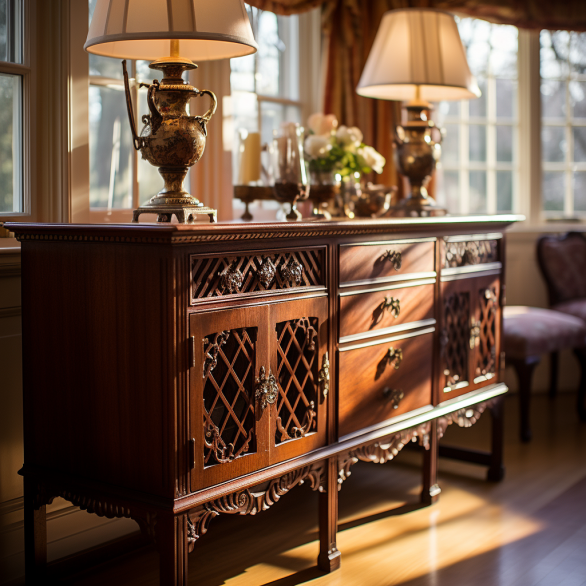Long Beach, Californiachange

How to Identify the Era and Style of a Piece of Furniture
POSTED ON 04.09.2023
How to Identify the Era and Style of a Piece of Furniture
Have you ever come across a piece of furniture that piqued your curiosity about its origins and history? Furniture often carries the distinct characteristics of its era and style, making it a tangible piece of the past. Identifying the era and style of a piece of furniture can be an exciting journey through design evolution and historical context.
To identify the era of a piece of furniture, consider the following aspects:
- Materials Used:
Start by examining the materials used in its construction. Different eras favored specific woods, metals, and fabrics. For instance, oak was popular during the Arts and Crafts movement, while chrome gained prominence in mid-century modern design.
- Construction Techniques:
Assess how the piece is constructed. Hand-crafted dovetail joints and mortise-and-tenon joinery were common in older furniture, while modern pieces often use screws and staples.
- Hardware and Fastenings:
Take a closer look at the hardware and fastenings. The style and materials of handles, knobs, and fasteners can provide valuable clues. Brass hardware might signify Victorian-era furniture, while sleek chrome fittings are typical of mid-century pieces.
- Design Elements:
Analyze the design elements such as legs, feet, and ornamentation. Cabriole legs, for example, are associated with Queen Anne and Chippendale styles, while tapered legs are prevalent in mid-century modern designs.Once you've determined the era, you can dive deeper into the specific style. Furniture styles often evolved within their respective eras. Here are some iconic furniture styles:
- Victorian: The Victorian era, spanning from the mid-19th century, is known for its ornate, elaborate designs. Curved lines, intricate carvings, and dark woods define this style.
- Art Deco: Emerging in the 1920s and 1930s, Art Deco is characterized by geometric shapes, bold colors, and the use of luxurious materials like exotic woods and metals.
- Mid-Century Modern: This style, prevalent in the mid-20th century, embraces clean lines, minimalism, and functionality. Furniture of this era often features innovative designs and materials.
- Rustic Farmhouse: A more recent trend, rustic farmhouse style emphasizes natural wood, simplicity, and a touch of nostalgia.
- Contemporary: Contemporary furniture reflects current design trends and often combines various materials and styles, making it diverse and ever-evolving.
Identifying the era and style of your furniture isn't just about historical knowledge—it can significantly impact your appreciation for each piece. Whether you're passionate about furniture restoration, assessing its value, or simply enjoying its beauty, understanding the origins of your furniture adds depth and significance to your space.






